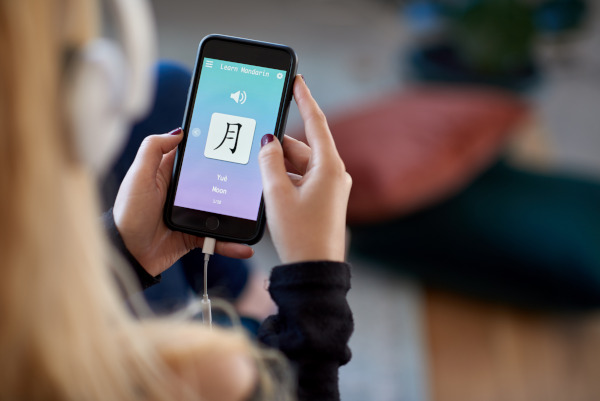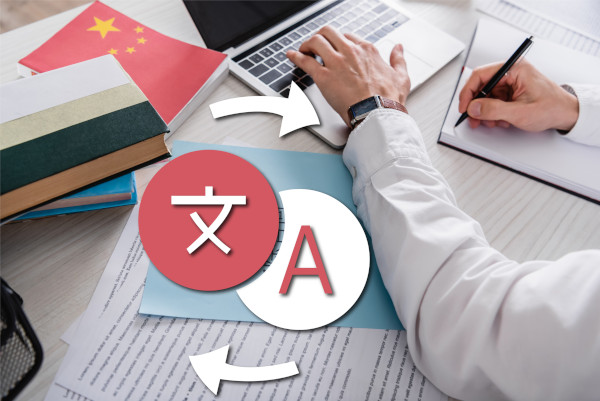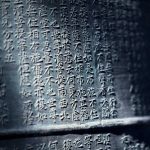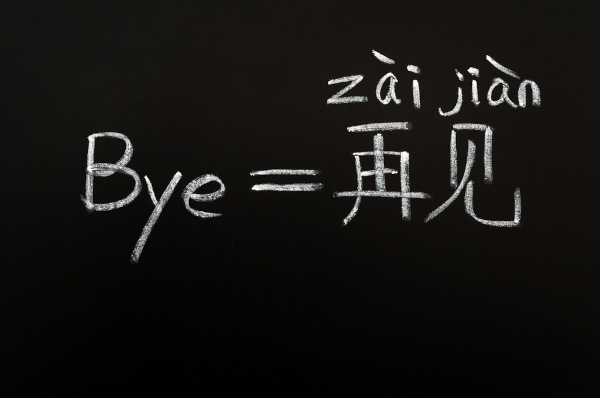
The Chinese language is interesting and hard to learn, and it is becoming more and more important in the world. As more individuals get interested in studying Chinese, numerous issues about the language arise, such as its difficulty, the number of nations that speak it, and the variations between its many varieties.
In this article, we’ll look at some of the most common questions about the Chinese language and answer them in a way that will help anyone who wants to know more.
1. Is Chinese a Difficult Language to Learn?
Yes. Mandarin is no different from any other foreign language in that it can be difficult to learn. But how hard it is to learn Chinese depends on things like your native language, how you learn, and how much time you spend studying.
Related reading: The Biggest Challenges in learning Chinese for English speakers
2. How Many Countries Speak Chinese?
Chinese is mainly spoken in China, which apparently has the largest number of Chinese speakers in the world. But it is also spoken in other places, such as Taiwan, Hong Kong, Macau, and Singapore.
There are also Chinese-speaking communities in North America, Europe, and Australia, among many other places in the world.
3. What Percent of the World Speaks Chinese?
About 16.3% of the people in the world speak Chinese as their first language. According to Ethnologue, a world language database, Mandarin Chinese, China’s official language, is spoken by about 1.2 billion people globally, accounting for around 16% of the global population.
When other Chinese dialects, like Cantonese and Wu, are counted, the number of people who speak Chinese goes up even more. Apart from native speakers, there are millions of people worldwide who have learned or are currently learning Chinese as a second language.
4. Which Is More Spoken Mandarin or Cantonese?
Mandarin is more widely spoken than Cantonese. It is the official language of China, and more than a billion people speak it around the world. Mandarin is also the most widely taught Chinese dialect in schools and universities outside of China.
Cantonese, on the other hand, is mostly spoken in southern China, particularly in Hong Kong, Macau, and the Guangdong province. It is also spoken by overseas Chinese communities in Southeast Asia and North America.
Even though a lot of people speak Cantonese, there are only about 80 million Cantonese speakers in the world, which is a lot less than the number of Mandarin speakers.

5. What Is the Difference Between Standard Chinese and Mandarin?
Standard Chinese, which is also called Modern Standard Mandarin, is the official language of China. It is based on the Mandarin dialect spoken in Beijing. Mandarin, on the other hand, refers to a collection of dialects spoken in Northern and Southwest China, including the Beijing dialect.
Hence, the distinction between Standard Chinese and Mandarin is that the former is a standardized version of Chinese that is based on the Mandarin dialect, whilst the latter refers to a collection of Chinese dialects spoken in China.
6. How Long Does It Take to Learn Chinese?

According to the U.S. Foreign Service Institute, which trains U.S. diplomats in foreign languages, it is estimated that it takes around 2,200 hours of study to reach professional working proficiency in Mandarin Chinese.
It is classified as a Category IV language, which indicates it is one of the most challenging languages to learn for English speakers.
Nevertheless, the length of time required to learn Mandarin can vary greatly based on variables such as your prior experience with language acquisition, your learning style, the amount of time you devote to studying, and your objectives.
Related reading: Chinese as A Second Language – Is Learning Chinese Worth It?
7. Why Should I Learn Chinese?
There are several compelling reasons why learning Chinese is an excellent choice.
Better job prospects: China boasts the world’s biggest population and the world’s second-largest economy. Knowing Chinese can open up many job opportunities in various fields, including business, government, education, and tourism.
Cultural exchange: Studying Chinese may provide you with a deeper understanding of Chinese culture, which has a rich history and several distinctive customs and traditions. This can aid in making new connections and promoting mutual appreciation amongst people of different backgrounds.
Travel: China is a popular tourist destination with many beautiful landscapes, historical sites, and cultural experiences. Knowing Chinese can enhance your travel experience and make it easier to communicate with locals.
Mind exercise:
Learning a new language is a proven way to strengthen the brain’s reasoning, memory, and problem-solving abilities.
Personal development: Studying a difficult language like Mandarin may be a rewarding experience that teaches you patience, tenacity, and self-discipline.
8. Should I Learn Traditional or Simplified Chinese?
It depends on your objectives and the intended usage of the language. In mainland China, people speak simplified Chinese, while those in Hong Kong, Taiwan, and other Chinese communities overseas speak traditional Chinese.
Learning simplified Chinese may be more practical if you plan to visit or do business in mainland China, whereas learning traditional Chinese may be more relevant if you plan to visit or work in Hong Kong, Taiwan, and other overseas Chinese communities, or if you are interested in Chinese culture and history. In the end, it’s your choice, and it should be based on your own needs and preferences.
No matter which writing system you learn, you will be able to talk to people who speak Mandarin in mainland China or Taiwan.
9. Should I Learn Mandarin or Cantonese?
The decision to learn Mandarin or Cantonese depends on your personal goals and circumstances.
Mandarin Chinese is China’s most commonly spoken language and the country’s official language. It is the language of government, education, media, and business. If you want to speak with people or conduct business in mainland China, studying Mandarin will be more useful.
Cantonese, on the other hand, is largely spoken in southern China, including Hong Kong and Macau. Several overseas Chinese populations in countries like the United States, Canada, and Australia also speak Cantonese. Learning Cantonese is more useful if you want to live or work in Hong Kong or Macau.
It’s important to note that Mandarin and Cantonese are separate languages with unique pronunciations, grammar, and vocabulary. Knowing one language does not guarantee that you will comprehend the other. Yet, if you are already fluent in one of these languages, learning the other will be much easier.
10. What Is Pinyin?
Pinyin is a method of phonetic notation that uses the Roman alphabet to represent the sounds of the Chinese language. It is the official way to write Mandarin Chinese in the Chinese mainland, and it is also a common way to teach Chinese as a second language.
Pinyin represents each Mandarin Chinese syllable as a combination of an initial consonant, a final vowel, and a tone. So, it helps people learn to read and say Chinese words more accurately by letting them spell out each syllable in a way that they are already used to.
For example, the simplified Chinese character for “hello” is “你好” while the traditional Chinese equivalent is “你好”. In Pinyin, it is written “nǐ hǎo,” and the accent marks show how each syllable should be pronounced.

11. What Is The HSK?
HSK stands for “Hanyu Shuiping Kaoshi,” which is a standardized Chinese language proficiency test. It evaluates the skills of non-native Chinese speakers to use the Chinese language in their daily, academic, and professional life.
The HSK test assesses competency in hearing, speaking, reading, and writing and is acknowledged as a trustworthy indicator of Chinese language proficiency by many institutions and businesses in China and other countries. It is separated into multiple levels, with HSK Level 1 being the most elementary and HSK Level 6 being the most advanced.
12. How to Learn Chinese Words?
There are various ways to learn Chinese words, including:
Start with the most frequently used words: Focus on learning words that are used in daily conversation and will help you communicate effectively in various situations.
Flashcards: Use flashcards, like Anki, to memorize vocabulary words and their meanings.
Repetition: Repeat words and phrases out loud to help commit them to memory.
Reading: Books, newspapers, and websites written in Chinese are great ways to learn new words.
Writing: Write Chinese characters and words to help reinforce their meanings and memorize them.
Language apps: Use language learning apps like Amphy, Duolingo, or HelloChinese that offer structured lessons and vocabulary-building exercises.
Practice with a language partner: Finding a language partner or tutor can help you practice your Chinese vocabulary in conversation. You can use online platforms like iTalki or HelloTalk to find language partners.
Language lessons: Enroll in Chinese language classes or hire a tutor to assist you in learning the language and expanding your vocabulary.
Related reading: Chinese as A Second Language – Is Learning Chinese Worth It?
13. How Many Chinese Characters Are There?

The most comprehensive dictionary of Chinese characters, the Zhonghua Zihai, includes over 85,000 characters, including rare and archaic characters. However, the Chinese government has set a standard list of 3,500 characters for basic literacy, while an educated person may know 8,000 to 10,000 characters.
Related reading: Fascinating Information About Chinese Characters
14. What’s The Difference Between Simplified and Traditional Characters?
Traditional and simplified Chinese characters look different, have different numbers of strokes, and are mostly used in different parts of China.
Because they have fewer strokes than traditional characters, simplified characters are easier to write and read. They are used primarily in Mainland China and Singapore.
Traditional characters have more strokes and are used primarily in Taiwan, Hong Kong, and Macau, as well as by overseas Chinese communities.
15. If I Can Read Pinyin, Do I Need to Learn to Read Characters?
While Pinyin is a helpful tool for learning Chinese pronunciation, it is not a substitute for learning to read Chinese characters. All written items, such as newspapers, books, signs, and websites, are written in Chinese characters, which serve as the written representation of the language.
Learning Chinese characters can make it much easier for you to read and understand the language. It can also give you access to a lot of information and cultural resources that you wouldn’t have if you only knew Pinyin.
Related reading: Chinese Language Mastery via Classic Literature – Tips and Tricks to Improve Your Skills – Opens in new tab
16. What Countries Use Traditional Chinese Characters?
Traditional Chinese characters are mostly used in Taiwan, Hong Kong, Macau, and other places where there are large Chinese communities, like Malaysia and Singapore.
Taiwan, Hong Kong, and Macau employ traditional Chinese characters as the official writing system for all official documents, publications, and education. It’s important to remember that mainland China started using simplified Chinese characters in the 1950s as part of a campaign to teach people how to read and write.
While simplified characters are now the standard in mainland China, some people there still use traditional characters, especially in calligraphy and other cultural practices.
Even so, simplified Chinese characters are becoming more common even in these places, especially in digital media and communications.
Related reading: Fascinating Information About Chinese Characters
17. Are Japanese Characters the Same as Chinese?
No, Japanese characters are not identical to Chinese ones, despite certain resemblances. There are three writing systems in Japanese: hiragana, katakana, and kanji. Kanji are characters adopted from Chinese and are used in Japanese to represent words or parts of words.
Nevertheless, Japanese and Chinese employ kanji differently, and many kanji have different meanings or pronunciations across the two languages. Additionally, Japanese has its own unique grammar and vocabulary, so even when using kanji, the two languages are distinct.
18. Can Someone Who Speaks Mandarin Understand Cantonese?
In general, a speaker of Mandarin may struggle to comprehend Cantonese due to the fact that the two languages are so different. However, speakers of both dialects may be able to understand some common vocabulary and written characters.
19. Which Is Older Cantonese or Mandarin?
Given that Cantonese is a dialect of Middle Chinese, which was spoken during the Tang Dynasty (618–907), it is generally accepted to be older than Mandarin. Mandarin, on the other hand, emerged during the Ming Dynasty (1368–1644) and Qing Dynasty (1644–1912).
Mandarin, which is also called “Standard Chinese,” was made in the early 1900s as a standardized version of spoken Chinese. The goal was to unite the language and make more people in China literate.
Cantonese, on the other hand, has a more extensive history. It was initially spoken in China’s Guangdong province and nearby areas, including Hong Kong and Macau.

20. What Language Was Spoken in Ancient China?
Old Chinese, also known as Archaic Chinese or Classical Chinese, was the language used in ancient China, and it differed greatly from current Chinese variants such as Mandarin or Cantonese.
Old Chinese is the oldest form of Chinese that has been found. It was used from the Shang dynasty (16th century BC – 11th century BC) to the Han dynasty (206 BC – 220 AD).
Because of the tonal nature of the language, the same words took on different meanings depending on the tone used to say them. It had a small number of syllables, and each syllable was represented by a single character.
Over time, Old Chinese evolved into Middle Chinese, which was spoken during the Tang dynasty (618-907 AD). Middle Chinese eventually gave rise to current Chinese dialects such as Mandarin, Cantonese, and others.
While Old Chinese is no longer spoken today, it is still studied and understood by scholars and historians. It is especially useful for studying ancient Chinese texts and literature because many of these works were written in Classical Chinese.
Related reading: How Old is the Chinese Language? – A Brief History from Archaic to Mandarin
21. Why Chinese Is Called Mandarin?
The term “Mandarin” was first used to describe a high-ranking official in the Chinese imperial court. Over time, the term came to be associated with the northern dialect of Chinese that was spoken by these officials and became the standard language of the court.
When Westerners started coming to China in the 1600s, they called this dialect “Mandarin” because it was the language of the officials they met.
This term eventually evolved to refer to China’s official language, which was based on the Mandarin dialect (or a group of dialects).
Mandarin is also known as Standard Chinese or Putonghua, which means “common speech”.
22. What are the 3 types of Chinese language?
Mandarin, Cantonese, and Min Nan are the three types of Chinese (also known as Hokkien or Taiwanese).
Mandarin is the official language of China. It is also called Putonghua or Standard Chinese. More than a billion people speak Mandarin. It is a standard language used in China’s government, media, schools, and other official institutions, and it is based on the northern dialect of Chinese.
Cantonese is primarily spoken in southern China, particularly in Guangdong province and surrounding areas, as well as in Hong Kong and Macau. It is a tonal language like Mandarin, but has a different set of tones and grammar rules.
Minnan is mostly spoken in the southern province of Fujian, Taiwan, and some places in Southeast Asia. It’s a distinct language with its own syntax, vocabulary, pronunciation, and intonation.
There are several more dialects of Chinese, including Wu, Hakka, and Shanghainese, among others. Each dialect has its own distinct features and is frequently associated with a specific region or community within China or the Chinese diaspora.
23. What Languages Are Spoken In Hong Kong?
Hong Kong is a multilingual city where many languages are spoken. Hong Kong’s official languages are Chinese (Cantonese) and English. But because Hong Kong has a long history and a diverse population, other languages, such as Mandarin, Filipino/Tagalog, Indonesian, and South Asian languages, are also spoken there.
End Words
Learning a new language may be both difficult and enjoyable. As we have shown in this essay, learning the Chinese language is no different from learning any other language and takes time and effort.
Nonetheless, there are various advantages to learning Chinese, including enhanced cultural knowledge, better work possibilities, and personal growth.
Everyone can study Mandarin from anywhere in the globe thanks to the increased accessibility of materials and technology for language learning. We hope that this article has given you useful information and inspired you to keep working toward your language learning goals.
Stay in Touch
 Join our newsletter by using the forms on this website or click here!
Join our newsletter by using the forms on this website or click here! Follow us on Google News
Follow us on Google News Follow us on Facebook
Follow us on Facebook
Feature Image from Depositphotos




